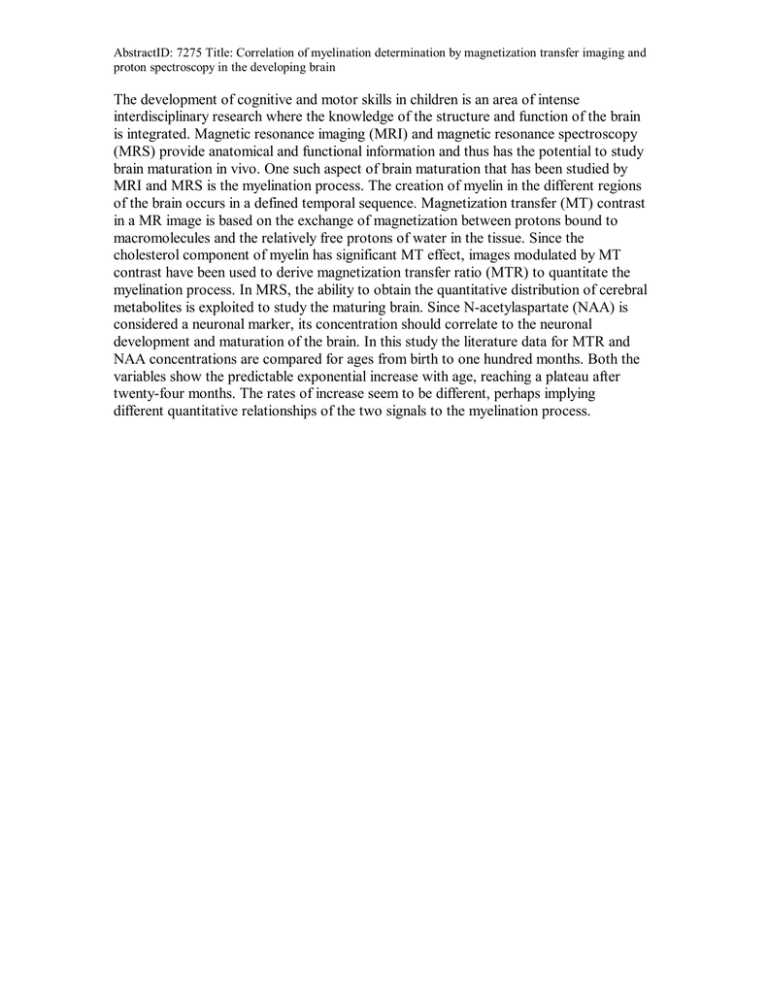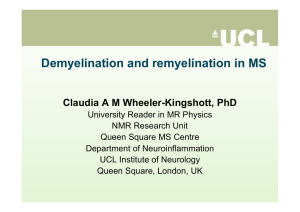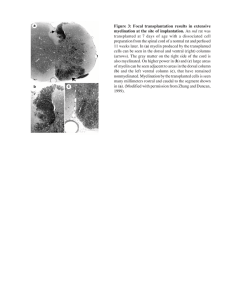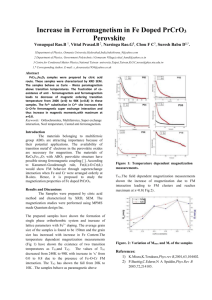Document 14776038
advertisement

AbstractID: 7275 Title: Correlation of myelination determination by magnetization transfer imaging and proton spectroscopy in the developing brain The development of cognitive and motor skills in children is an area of intense interdisciplinary research where the knowledge of the structure and function of the brain is integrated. Magnetic resonance imaging (MRI) and magnetic resonance spectroscopy (MRS) provide anatomical and functional information and thus has the potential to study brain maturation in vivo. One such aspect of brain maturation that has been studied by MRI and MRS is the myelination process. The creation of myelin in the different regions of the brain occurs in a defined temporal sequence. Magnetization transfer (MT) contrast in a MR image is based on the exchange of magnetization between protons bound to macromolecules and the relatively free protons of water in the tissue. Since the cholesterol component of myelin has significant MT effect, images modulated by MT contrast have been used to derive magnetization transfer ratio (MTR) to quantitate the myelination process. In MRS, the ability to obtain the quantitative distribution of cerebral metabolites is exploited to study the maturing brain. Since N-acetylaspartate (NAA) is considered a neuronal marker, its concentration should correlate to the neuronal development and maturation of the brain. In this study the literature data for MTR and NAA concentrations are compared for ages from birth to one hundred months. Both the variables show the predictable exponential increase with age, reaching a plateau after twenty-four months. The rates of increase seem to be different, perhaps implying different quantitative relationships of the two signals to the myelination process.







